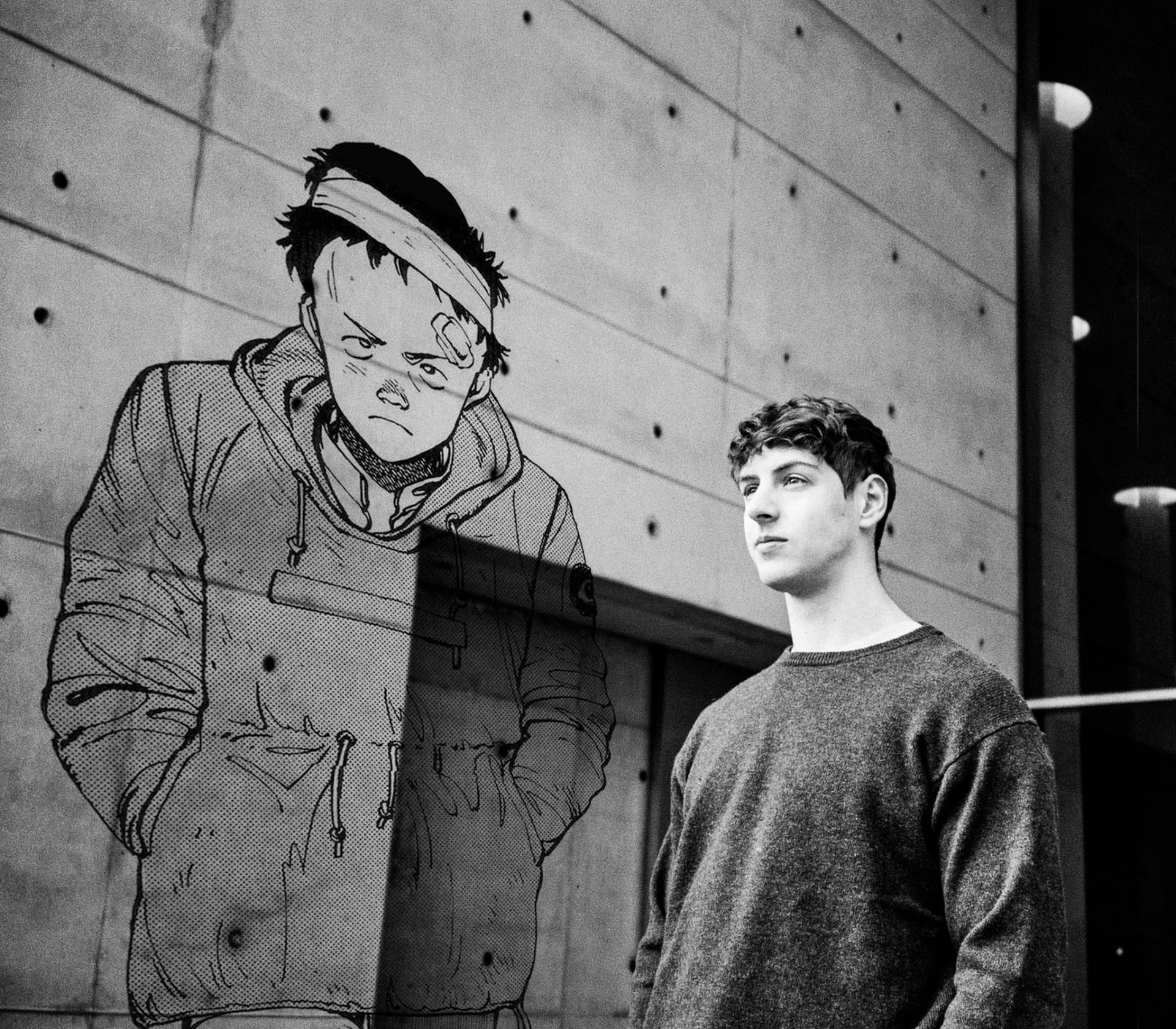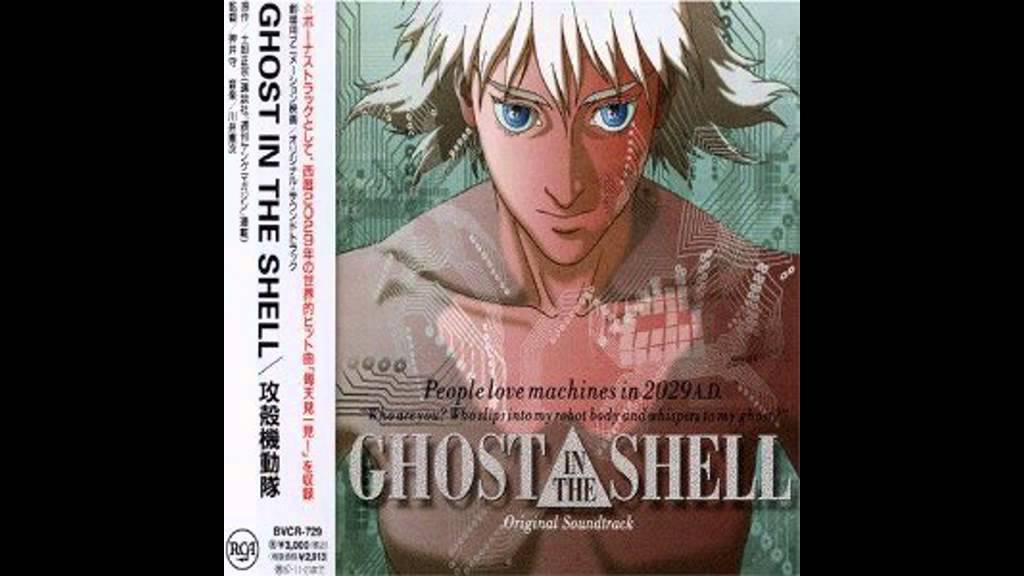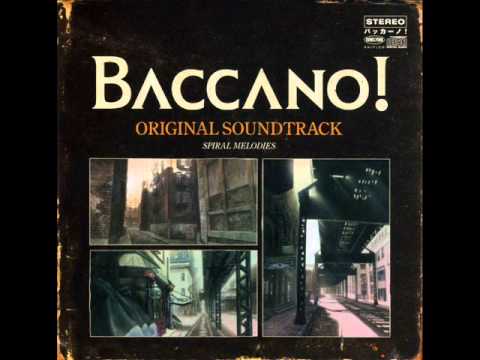
Beyond Akira: Bwana’s Guide To The Best Anime OSTs
Last month, rising house producer Bwana released Capsule’s Pride, a concept album that reimagines the soundtrack from Katsuhiro Otomo’s iconic anime film, Akira. The outing from the Berlin-based producer was anything but a passing dalliance with Japanese anime, as Bwana has a near-encyclopedic knowledge of anime films and a deep appreciation for their original soundtracks, or OSTs. Here, he walks us through ten of the best OSTs from old and new anime moves, from the trance-inspired tracks on Kensuke Ushio’s Ping Pong to the weird futurisms of Mamoru Oshii’s Ghost In The Shell and the J-Pop-meets-drone score for Satoshi Kon’s Perfect Blue.
Ghost In The Shell
Along with Akira, Mamoru Oshii’s Ghost In The Shell has undoubtedly served as many peoples’ main entrance point to the wider world of anime, particularly in North America. Based on the manga by Masamune Shirow, GITS offers us a glimpse into a future of ultra-cyberization, where the digital flow of information has evolved to the point of taking physical form. The score by Kenji Kawai (this film is anything but kawaii) is eerie, beautiful and somehow presents itself as both futuristic and oddly traditional. The now-instantly recognizable choral sounds of the opening theme “謡I – Making Of Cyborg” are based around an ancient Japanese wedding ritual to send away evil spirits. It’s haunting and beautiful all at once. (When I first heard John Talabot’s “Depak Ine”, I couldn’t help but feel this was a major influence!) Later tracks like “Access” and “Floating Museum” offer moments of short-lived optimism in their lush ambience. It all comes together on the final refrain of “謡III – Making Of A Cyborg 3: Reincarnation”, where the two themes mix into this great dramatic climax. It’s epic. There’s no other way to describe it.
Honorable Mentions: The Ghost In The Shell Playstation soundtrack that is essentially a gathering of names from house and techno. I can only assume it is also badass (I don’t play video games). Highlights from Mijk Van Dijk, Joey Beltram and Takkyu Ishino.
Ghost in The Shell: Stand Alone Complex OST 2. The track “Cyberbird” is immensely uplifting and can turn your average jog around the park into the most epic two-mile run of your life. The vocals from Gabriela Robin soar through this.
Lupin The 3rd
I have to be honest—the size of this franchise has scared me away from watching anything outside of some episodes from the 1977 series (thank you, Adult Swim!). There are so many different iterations of the character and his adventures through various series, films and reboots, so the fact that it has continued to be reinvented and stay relevant 50 years after its initial appearance as a manga in 1967 is pretty incredible.
Musically, it’s the same story. Just looking through Discogs you can find over 20 different soundtracks, but let’s focus on the 1977 series. I never really appreciated the soundtrack until it was re-introduced to me by a friend, and I’ve now come to appreciate it as a standalone body of work. If you like boogie, jazz, smooth melodies and lots of sax, this is for you. It’s as classy as the show’s protagonist. The compositions by Yuji Ohno are fantastic; super psychedelic, driving and groovy. Side note—if you like this, be sure to check Ohno’s 1983 album Full Course.
Honorable Mention: The 2005 remixes of the main theme and love theme with Japanese vocals take this OST to a new level of charming.
https://www.youtube.com/watch?v=rpFgk8wsmhc
Cowboy Bebop
Big-band jazz fusion. Old time, Western-influenced harmonica solos. The blues. Random cultural references like the James Bond theme cameo on Rush. Generally great times all around. If any of that is of interest to you then better head on over, because there’s all that and more in this cult classic OST. Yoko Kanno (you’ve heard her work on The Vision Of Escaflowne, Macross Plus, the aforementioned Stand Alone Complex and much, more more. It’s Yoko Kanno!) took influences from anything and everything for this one. It’s a great time and you will become far too attached to the musical themes here, just like the characters in the show… oooh Spike Spiegel.
OK: 3, 2, 1 — LET’S JAM!
Baccano!
My dad is the biggest jazz head I’ve ever met. He knows his stuff and can very quickly decide if something is good or bad. Two summers ago I played this album on a lazy Sunday back home and he said, “This is very nice.” If that high praise hasn’t sent you frantically clicking to your nearest iTunes store then I shall elaborate. Baccano! has really gained a lot of momentum in the anime universe the last few years, and it’s no shock as to why; it’s unlike anything else out there. It tells a very unique story, but I think a lot of it also has to do with this OST. Makoto Yoshimori’s compositions are simply timeless and classy. This is one of the few anime OSTs I’d be comfortable with soundtracking a meeting with future in-laws.
Ping Pong (The Animation)
This is a show about perseverance and overcoming your fears to become the best you can possibly be. It’s a show about the high stakes, high excitement world of ping pong—and it most definitely comes through on the most euphoric anime OST I’ve ever heard. Out of anything on this list, Ping Pong (The Animation) is the most likely to have music for my DJ sets. The trance-inspired tracks pack a real punch. The drum tracks are inventive (the use of ping pong balls as percussion on “Ping Pong Phase II” is incredible), the synths are in your face and the baselines make me wanna go grab my copy of In Search Of Sunrise 4: Latin America and remind myself that Tiësto was once human. Beyond the trance, though, are great interludes that are incredibly charming and offer a small moment of pause before you’re suddenly thrown back into the game. This is the fist work I’ve heard from Kensuke Ushio but I’ll definitely be looking out for any future works, either OST or stand-alone release. Sugoi!
Mushishi
One afternoon a few years ago, I was sitting on the couch wasting time and trying to choose a show on Netflix. I stumbled upon an anime title I’d never heard of before called Mushishi. It sounded interesting so I pressed play. When I finished it two days later, I felt like I’d come out of some hazy, weird dream. Everything was calm and otherworldly. That about sums up this OST. It will take you to another place. It’s beautiful, airy and will most definitely leave you in in either a controlled state of zen or ready to take on the world because you feel so damn inspired—but could you really expect anything else from Toshio Masuda? The guy scored Naruto and that is such an amazing, long and crazy OST that I didn’t even include it on here for fear of rambling forever and taking up all your time and then accidentally telling you to watch the show and then ruining your life because you’d pretty much have no spare time ever again. Learn from my mistakes!
https://www.youtube.com/watch?v=hbvoU84-MgY
Samurai Jack
Now before you get all angry and say, “But Bwana, this isn’t an anime,” allow me to make my case on this one. No, technically this is not an anime, but I feel feel very strongly that this show not only captures the ethos of what a good anime should be but also spawned one of the best original scores of any animated show or film that I’ve ever seen. This OST has everything: there is big band, jazz, orchestral works, traditional-sounding music with influences from all over the world and, most notably for the people reading this article, really, really great electronic dance music. You’ve got IDM, acid house, drum ‘n’ bass and techno, all of which are done very well. There is even one episode based entirely around the concept of Samurai Jack saving the kids of a small town from an evil DJ with mind-controlling techno. The music is almost all composed by James L. Venable of Powerpuff Girls fame (great score as well) and the sheer variety and production quality is enough to floor you. I implore everyone to watch this show and get ready for a new season later this year.
Full Metal Alchemist: Brotherhood
FMA: Brotherhood is what I like to call a “gateway anime.” It’s one of those titles that gets tossed around as a suggestion for people wanting to get started on their journey into wide, wide world of anime. However, it’s a slippery slope. Your friends will say, “Come on man try it, it’s just one show,” and it all seems like harmless fun while you’re having a great time with the Elrich brothers saving Central City. But then, BAM! Next thing you know it’s a year later and you’re on the 600th episode of One Piece asking, “When will he just become the pirate king???”
In any case, the reason for this title coming so highly recommended to anime newbies is because it’s simply a perfect show. It is a reasonable length and has a conclusive ending. The story is dense involving memorable characters and themes. And most importantly, Akira Senju’s score is simply divine. This thing is a beast. Divided over two discs (it’s nearly three hours long), this OST is charming, epic, romantic, sad… throw an adjective out there and you’ll find some music that fits. By the end, you’ll be just as attached to the characters as you are to their musical themes. Go watch, but make sure you have a friend looking out for you. I’ve seen too many lost to an anime hole.
https://www.youtube.com/watch?v=bBYov_68P7U
Perfect Blue
I had a very difficult time with this one. It’s one of my all-time favorites—but then again, so is nearly everything ever made by Satoshi Kon. I could easily have picked Paprika or Paranoia Agent. Kon was one of the most original creative forces in anime and alongside his stunning visuals, the accompanying music is usually just as engaging. I’m not going to touch too much on the story here, but there is no doubt that Perfect Blue is a masterpiece—just ask Darren Aronofsky. For anyone that has ever struggled with ideas around perception and identity, I highly recommend you check this out.
The score is stunning and spans everything from J-Pop to house music and drone. This is also one of the rare soundtracks of Kon’s work that wasn’t done by another legend in Japanese music, Susumu Hirasawa. This particular set of tracks was done by Masahiro Ikumi to stirringly creepy effect. I love it, Darren Aronofsky REALLY loves it and I’m sure you will too. I’ll let you Google that one.
Robot Carnival
This is the only project I know of involving both Joe Hisaishi (responsible for a lot of your favorite Studio Ghibli music) and Katsuhiro Otomo (Akira). I’ll leave it at that.
https://www.youtube.com/watch?v=RGhLofQkwxE&list=PLA26BA5EBF003652D&index=1
Cover photo via Indiecurrent.
Published April 19, 2016.




